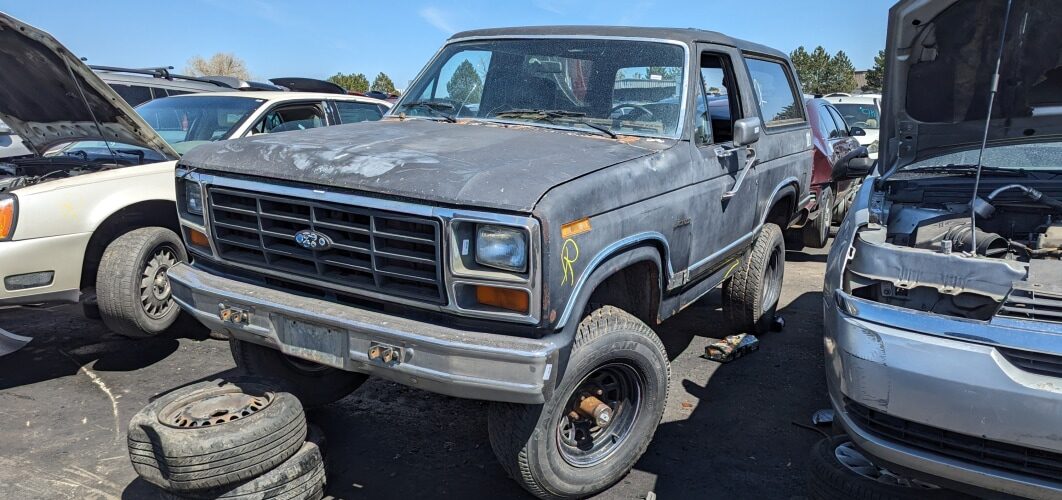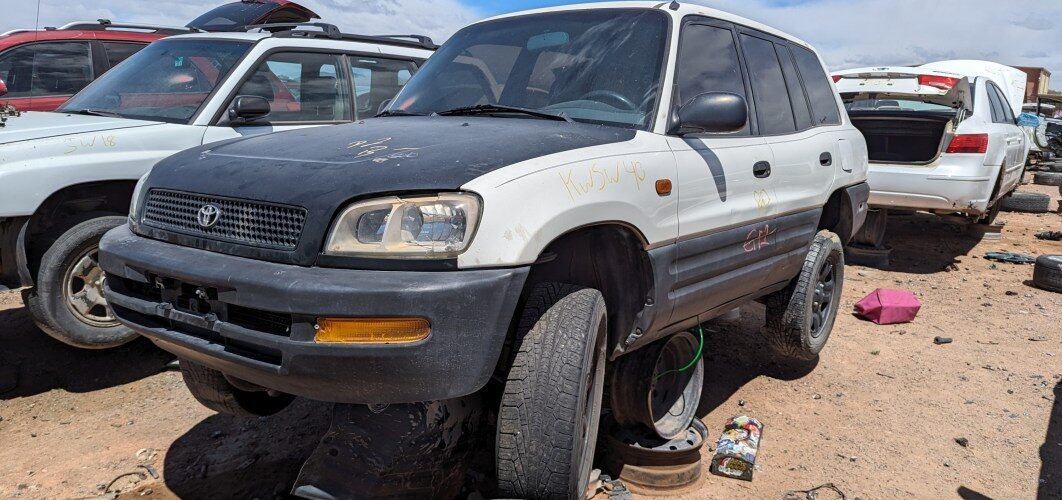Ford built the Bronco from the 1966 through 1996 model years, after which it was replaced by the Expedition and its four doors. Then came 2021, when a brand-new Bronco appeared to do sales battle with the Jeep Wrangler. Broncos from the first couple of decades of production are junkyard rarities today, and the few that do show up in the boneyards tend to be mangled beyond recognition or picked clean within days of arrival. That made this ’83, found in a Denver-area yard, an extra-special Junkyard Gem.

The first-generation (1966-1977) Bronco was built on its own bespoke chassis with a very short 92″ wheelbase, just an inch longer than that of the little MGB sports car. For 1978, the Bronco moved to a shortened version of the F-Series truck chassis, becoming much bigger in every dimension and gaining more than 1,500 pounds in the process. The Bronco remained a member of the F-Series family all the way through the end of production in 1996, getting updates paralleling those of F-100/F-150 generations.

This one is a member of the third Bronco generation, built from the 1980 through 1986 model years.

The door tag tells us that it was built in December of 1982 at Ford’s Michigan Truck Plant in Wayne, and that it was sold new via the sales office in Seattle, Washington.

The base engine in the 1983 Bronco was the 300-cubic-inch (4.9-liter) straight-six, a sturdy truck-only plant rated at 115 horsepower and 223 pound-feet in this application. 302 and 351 (5.0- and 5.8-liter) Windsor V8s were available as options.

The base transmission in the 1983 Bronco was a four-on-the-floor manual, which could be equipped with an overdrive top gear for $78 extra ($250 in 2024 dollars). That’s what’s in this truck.

The F-Series-based Bronco became more comfortable (alongside its pickup siblings) as the generations went by, but the third-generation version was a noisy, rough-riding real truck that would be considered intolerably crude by modern SUV standards.

This one didn’t get built with many options, but it did get the extra-cost rear window defroster with this afterthought of a switch.

Air conditioning? Not at $729 ($2,337 after inflation). Just open the windows!

The MSRP for the base ’83 Bronco was $10,589, or about $33,948 in today’s dollars.

Just to confuse everybody, Ford began selling a compact SUV based on the Ranger for the 1984 model year, calling it the Bronco II. This was in keeping with the tradition established when full-sized LTDs were sold alongside Torino-based LTD IIs during the mid-to-late 1970s. Since the current Bronco is based on the Ranger platform, that makes it more the spiritual descendant of the Bronco II than of the F-Series-based 1980-1996 Bronco.
Perhaps delivering the new Ford trucks via helicopter assault while “Ride of the Valkyries” plays was in poor taste, just six years after the Fall of Saigon and two years after “Apocalypse Now” hit theaters.
You won’t believe the deals on new ’83s at National Ford Truck Week!












